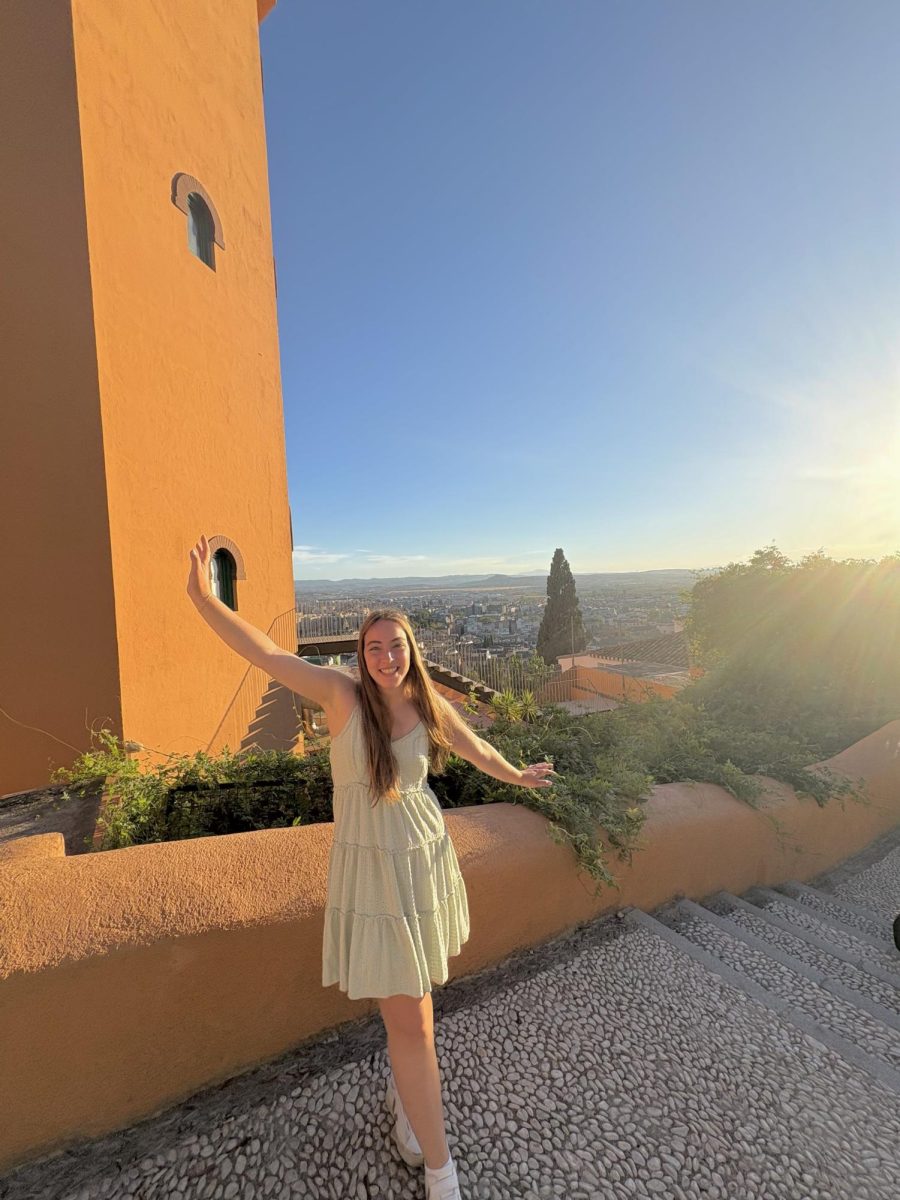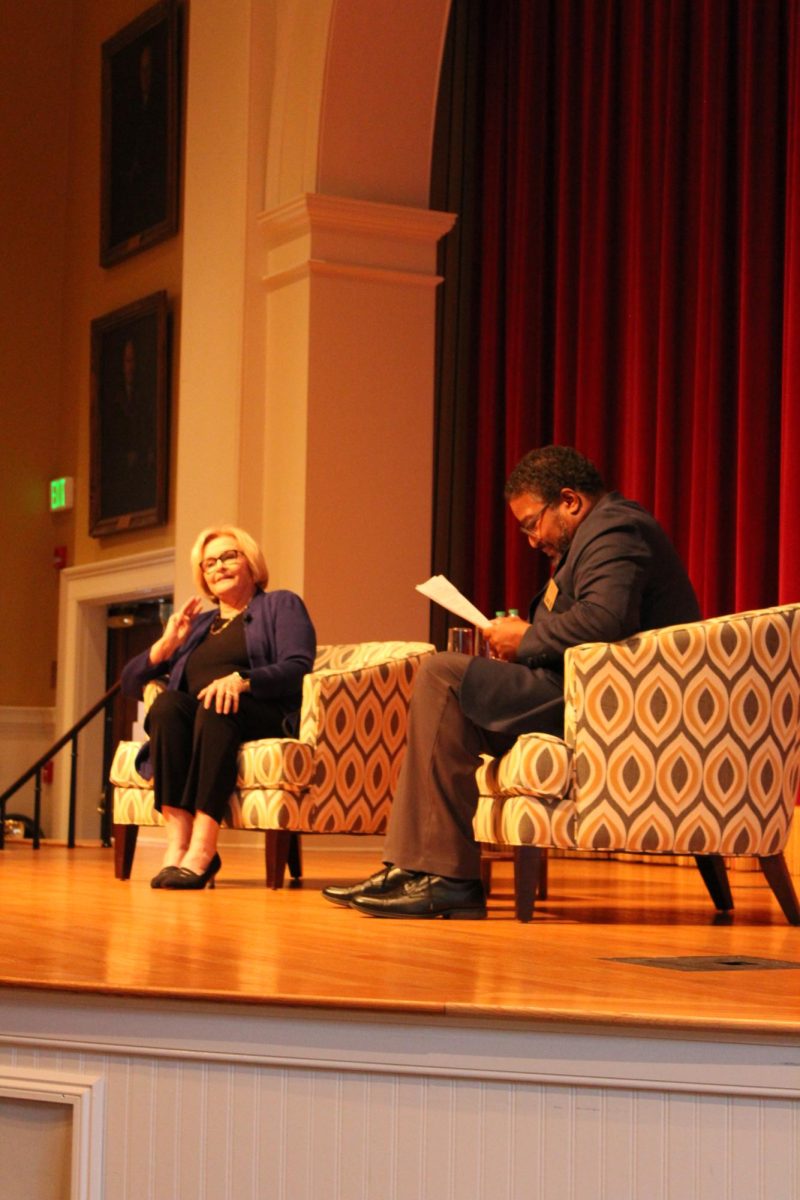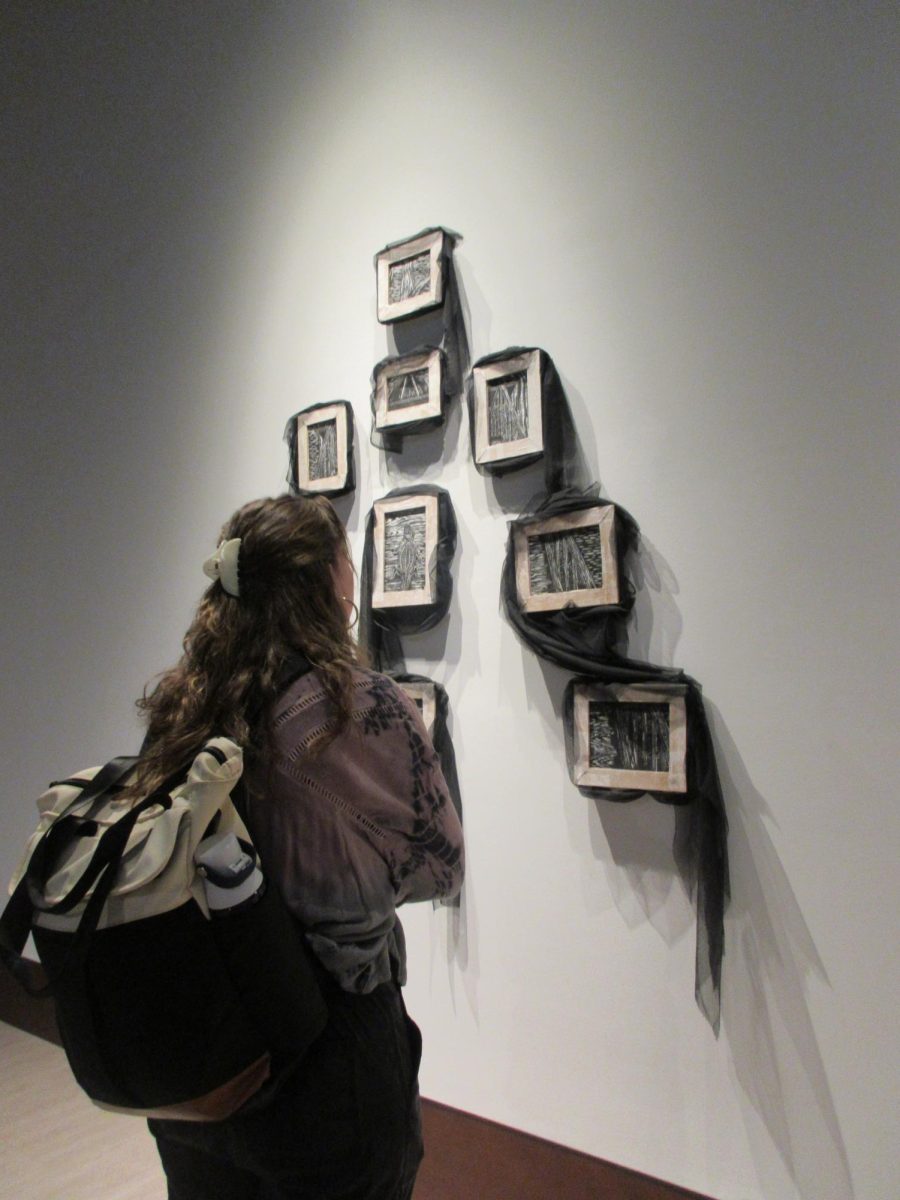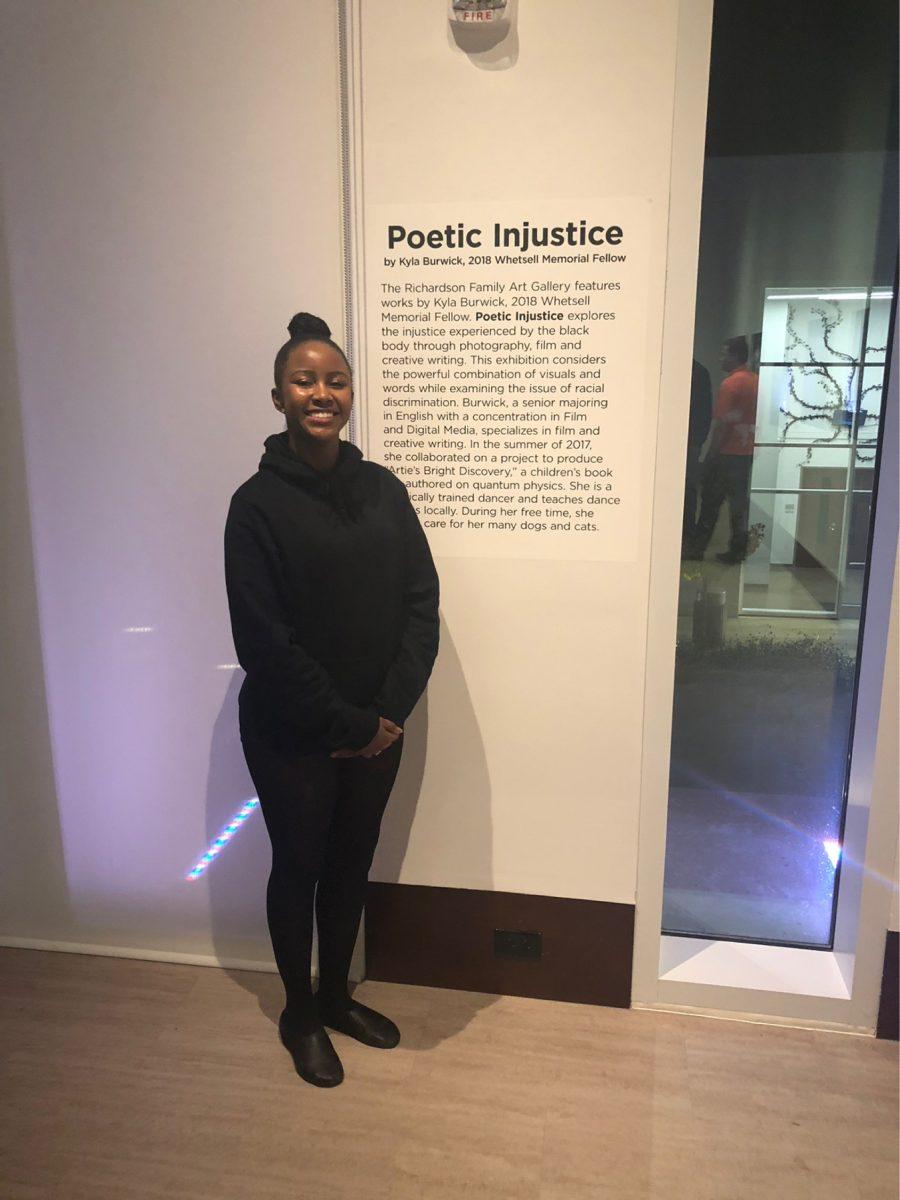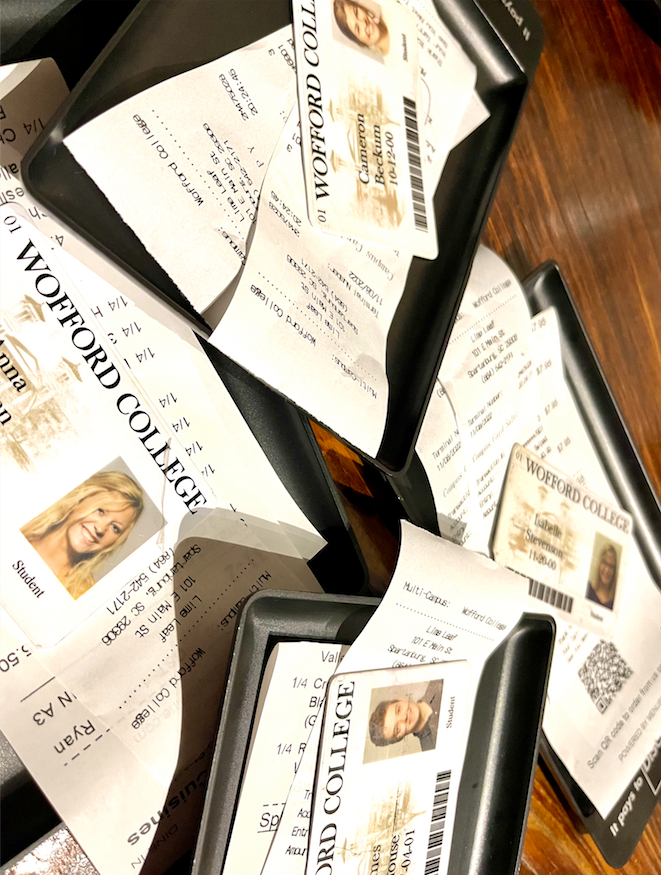An Exhibition by 2018 Whetsell Fellow Kyla Burwick ‘19
At Wofford, many students seize the opportunities to do research projects in the sciences and, during the summer, work on projects to show audiences what they have been working on. However, in the humanities, English major and film/digital media student Kyla Burwick ‘19 took the same opportunity to bring light an issue that is very near and dear to her heart: racial injustice in the United States. On Nov. 15, 2018, Burwick debuted her exhibit Poetic Injustice in the Rosalind Sallenger Richardson Center for the Arts. This project was her exhibition as a 2018 Whetsell Fellow, a program started in 2006 by Dr. William O. Whetsell in memory of his brother, Dan Whetsell. Burwick was given the opportunity to work with several Wofford professors during the summer in preparation for her big night.
Burwick says she was heavily influenced by the story of Kalief Browder, a young black man from the Bronx who ultimately committed suicide after spending unwarranted time at Riker’s Island for a crime he never committed and that he was never convicted of.
Burwick: “I was in such a vulnerable state and didn’t know what I could do, or if there was anything I could do, to change what was happening, but I knew that I could at least create something that evoked a similar emotion to the one that I felt when I watch that documentary: empathy.”
The heartfelt presentation included several touching photographs, a model of a cell that Browder stayed in and also a dance by Burwick herself. She noted that she “really wanted to bring this conversation into a space where it couldn’t be ignored because it’s important to me as a student of color and as a black person in America. I wanted to add my voice to this conversation in the only ways that I knew how.” As assistant professor of English, Dr. Kimberly Hall, introduced her, Burwick is an “observer first” in addition to being a writer and dancer.
Ultimately, what Burwick wants from this exhibit, which can still be seen in the Arts Center, is for anyone who sees it to “understand that this is a real issue and not one that we can watch unfold on TV and just hope for the best.” If that brings anger, sadness, empowerment, courage or empathy, then the exhibit has done its job. After all, as Burwick says, “change won’t come unless we talk about it and take action.”



